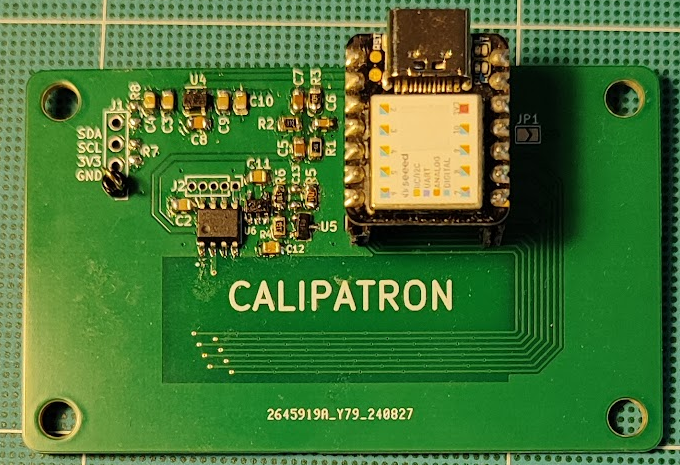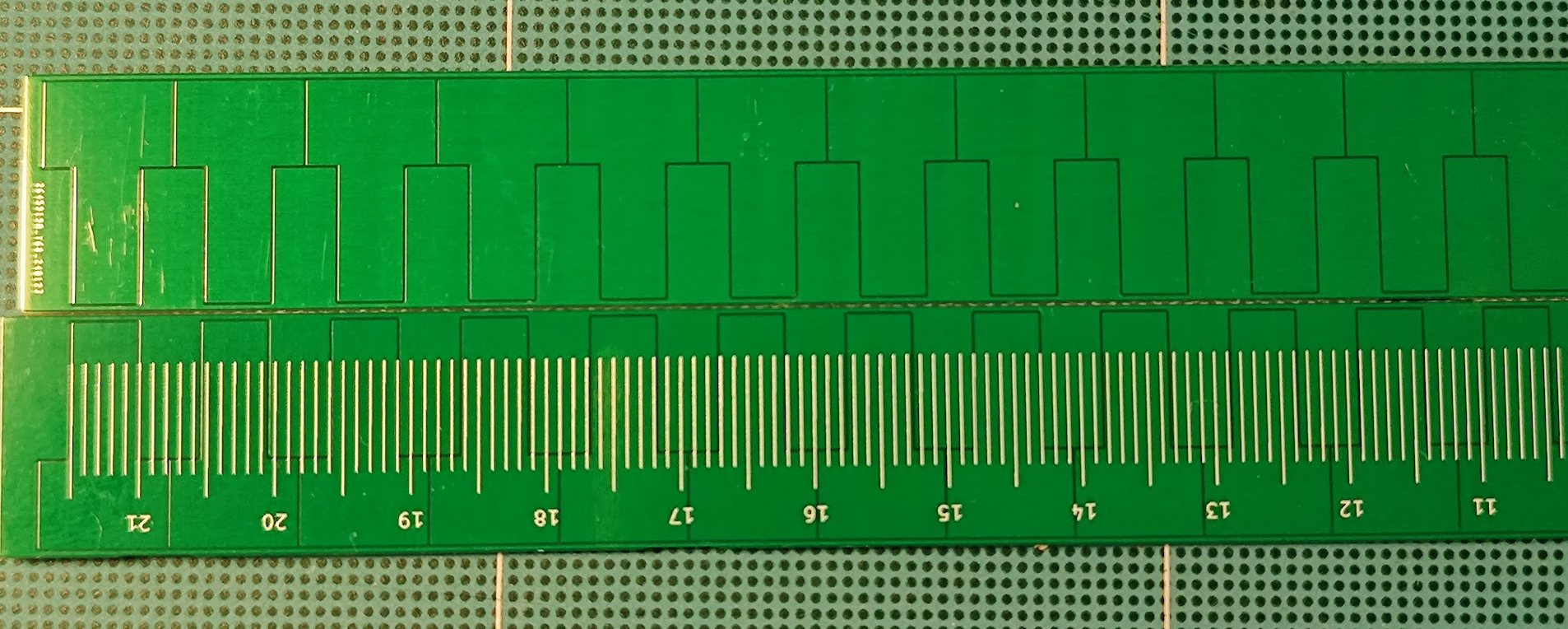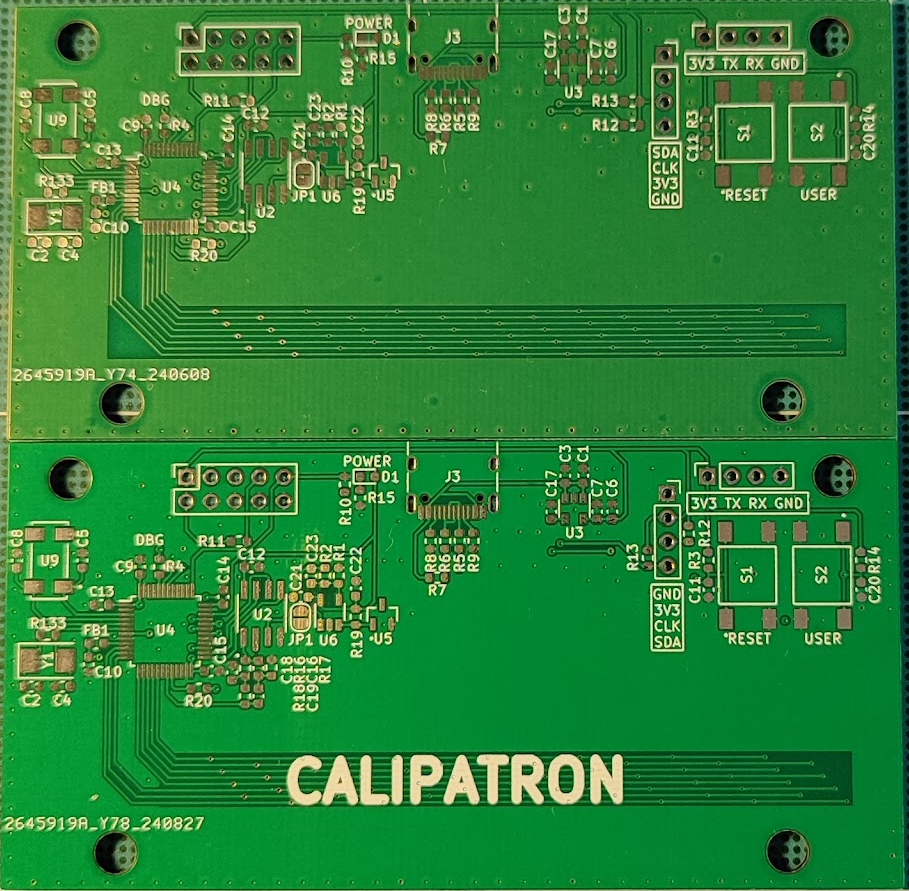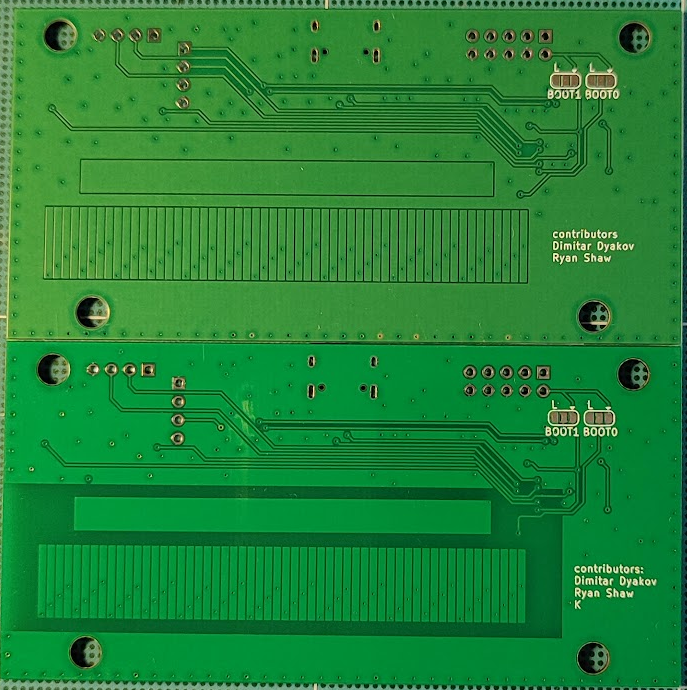Hey everyone,
I know it is been a while. The project is still alive. I just had a rough patch designing PCBs for the project. For some time I did not had s solution for the noise problem, but now I do and here is the update. I tried addressing it with a the twin t-notch filter. That was not eliminating the problem, but rather putting a band-aid on it. Also fixed a few other minor things.
- T-scale bar was wrong. The board was kind of working with the old one (on top) so it did not made an impression on me at first. But digging into the project it was getting clear that there was something off with the signal we puck up. Also for bonus points I added millimeter scale silkscreen.
![]()
- On the front of the board. I finally fixed the display pinout. It took me a few tries. I added the twin T-notch filter and ran the ground closer to the excitations signals. We have a name "CALIPATORN" - I did not come up with the name :|
![]()
- The big big change is on the back of the board and the one that brings the major improvement. What should strike you is the keep out area around the excitation/pickup pads. The ground plane was the source of the 50/60hz noise. When the T-scale was out of alignment it coupled with the ground and introduced the AC signal through the op-amp which amplified it and we could clearly see it on the measurement
![]()

The board above is our technology demonstrator. There are many other MCU on the market that are both cheaper, faster and with more feathers than the STM32F103. There are also people that don't like ST MCU in general. To address this I am working on this board. This contains the power supply and the op-amp part of the tech demo, but has a socket that holds XIAO style board. The good part is that you can have Arduino, Raspberry Pi or ESP-32 powered Calipatron. This board has a few glitches to iron out, but I will get there soon.

I now feel good about the CALIPATRON V1 that I recommend interested people to get some boards to experiment with. To do this in the near future I will upload schematics, gerbers, component position files, BOM and assembly schema. If on other hand you want a complete board you will be able to find some on the tindie shop.
Cheers,
M
 Dimitar
Dimitar


Discussions
Become a Hackaday.io Member
Create an account to leave a comment. Already have an account? Log In.